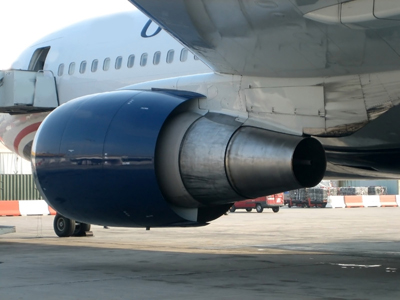 Data entry error, especially in the aviation sector may lead to potential serious safety issues. Various take-off accidents have occurred worldwide, due to errors made by the flight crew. Errors may happen due to different types of crew actions such as wrong figure being used, data entered incorrectly, data not being updated, and data being excluded. A range of systems and devices including laptop computers, the flight management computer, and the aircraft communications addressing and reporting systems may be the origins of such errors. This may lead to noticeable reduction in the aircraft’s performance during takeoff, the aircraft being destroyed and loss of life.
Data entry error, especially in the aviation sector may lead to potential serious safety issues. Various take-off accidents have occurred worldwide, due to errors made by the flight crew. Errors may happen due to different types of crew actions such as wrong figure being used, data entered incorrectly, data not being updated, and data being excluded. A range of systems and devices including laptop computers, the flight management computer, and the aircraft communications addressing and reporting systems may be the origins of such errors. This may lead to noticeable reduction in the aircraft’s performance during takeoff, the aircraft being destroyed and loss of life.
Data Entry Error – A Real Time Scenario
It is reported that an error occurred when calculating the number of bags loaded onto a commercial Boeing 737 flight to Melbourne. Due to miscalculation, the total number of bags loaded was 189 instead of 93, with an estimated additional weight of about 1,600 kg. The team leader of the load control assessed that the additional baggage weight was okay, and that adequate fuel was uploaded for the purpose. He chose not to advise the flight crew of the discrepancy. However, if the flight crew were advised of this discrepancy, the additional weight figure would have been used to modify the approach speeds that had been generated based on the weight entered before departure. For an additional weight of 1,600 kg, the captain reported the approach speeds would normally increase by about 1-2 kt. Fortunately, the flight arrived safely without any problems.
Parameters to Analyze Data Entry Errors
Evaluation of errors relating to accidents and incidents are done based on the following parameters.
- Performance parameter
- Error action
- Device
Performance parameter
Errors may happen when the take-off performance parameters are erroneously entered into an aircraft system; not updated or checked after having made a change in flight conditions. The parameters include:
- Weight parameters
- Take-off reference speeds
- Runway details
Error action
Mistakes in take-off parameters may occur due to the following reasons.
- Entered incorrectly: When the take-off performance parameter is incorrectly transposed or transcribed into an aircraft system, like when a weight of 242,000 kg is entered instead of the actual 342,000 kg.
- Not updated: The parameters are calculated, but the appropriate aircraft device is not updated.
- Incorrect manual: Sometimes the correct manual is not available or the incorrect manual is referenced.
- Wrong figure used: Entering mistaken performance parameters during the data entry or calculation phase. For example, the zero fuel weight (ZFW) is used instead of the take-off weight (TOW).
- Not checked: After the change in flight conditions, the take-off performance parameters are not re-calculated or rechecked.
- Data excluded: Information used to calculate take-off performance parameters are excluded during the calculation stage.
Device
The device refers to the aircraft system that is used to obtain, calculate or enter take-off performance parameters. It also includes aircraft documentation and charts, take-off data cards, laptop, handheld performance computers, and aircraft systems.
As per another report, the incorrect entry of takeoff weight data resulted in the tail strike and runway overrun of an Emirates Airbus A340, upon departure from Melbourne airport. This erroneous data entry somehow passed through the subsequent checks without being noticed.
Data entry errors can be addressed to a certain extent by regular monitoring and checking, assessing and planning, by implementing risk control measures, and with crew management practices and training.



